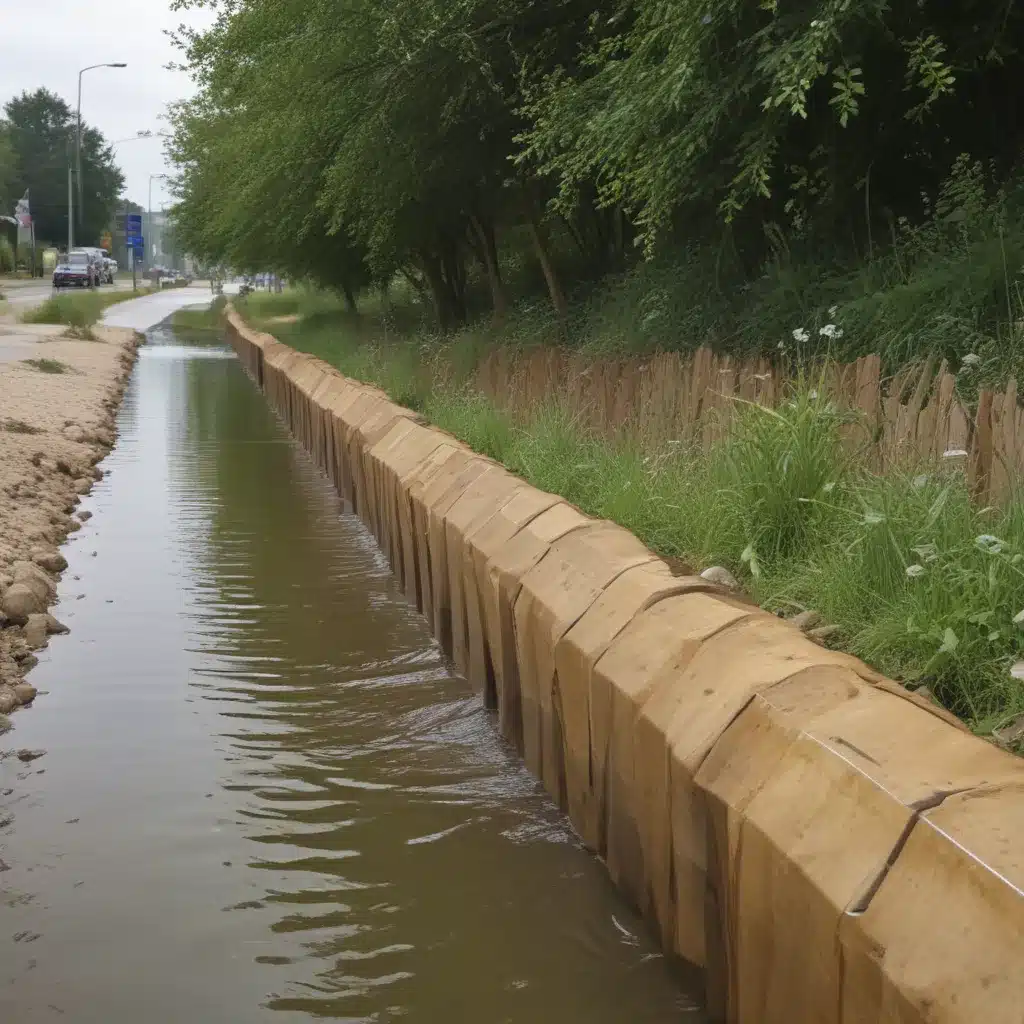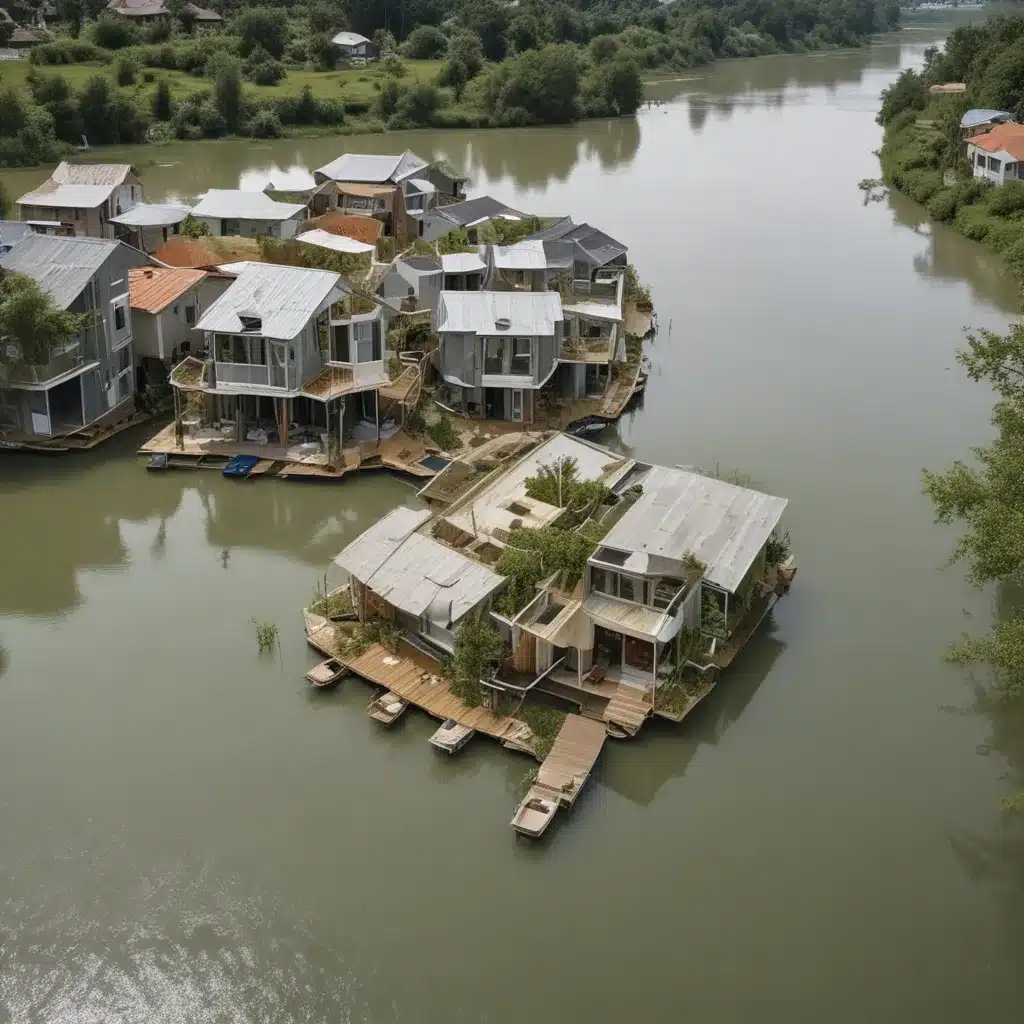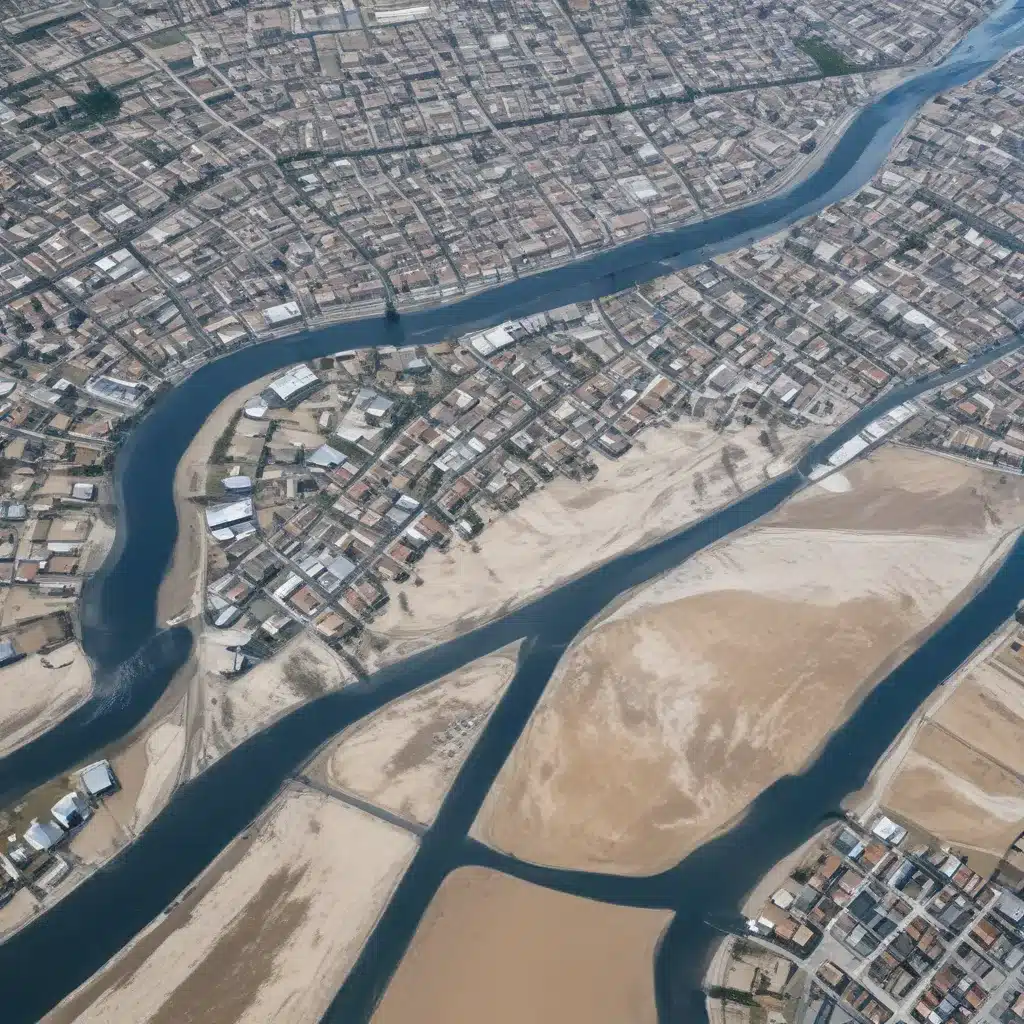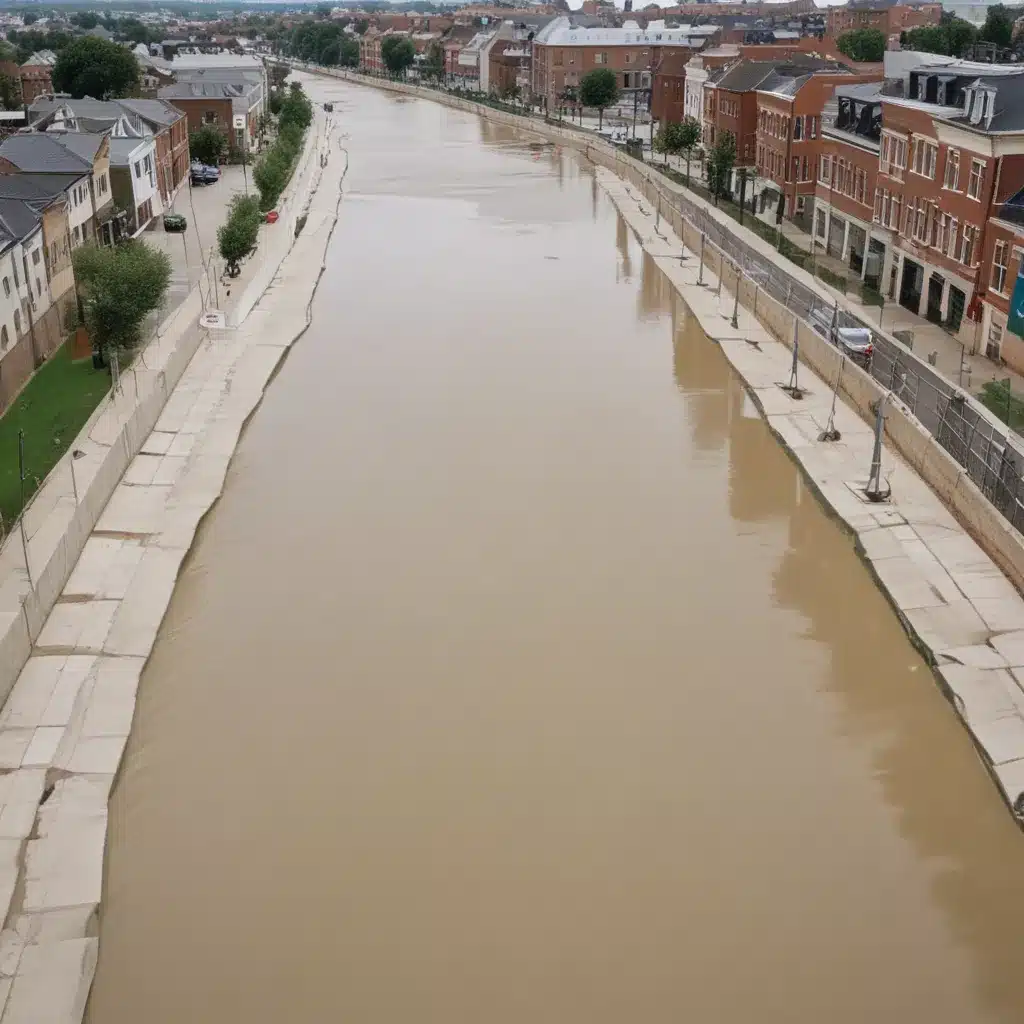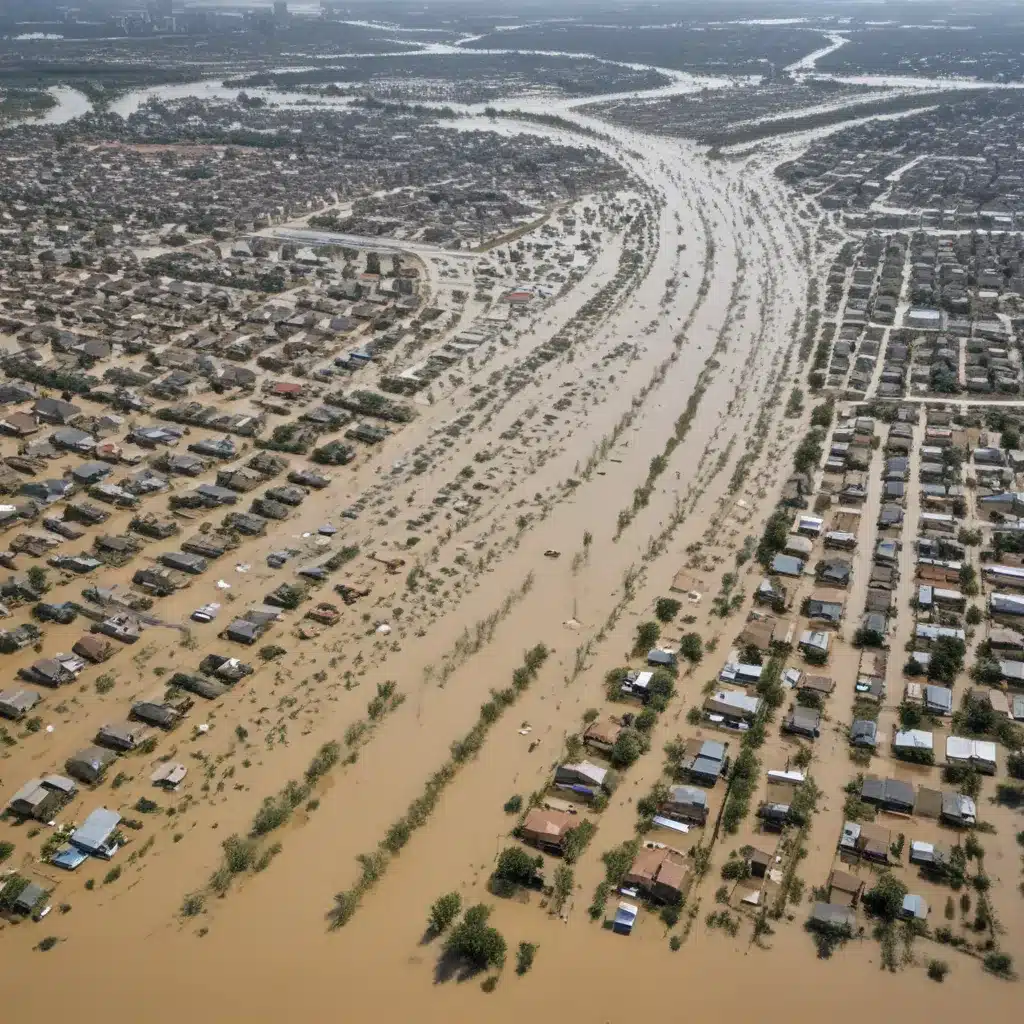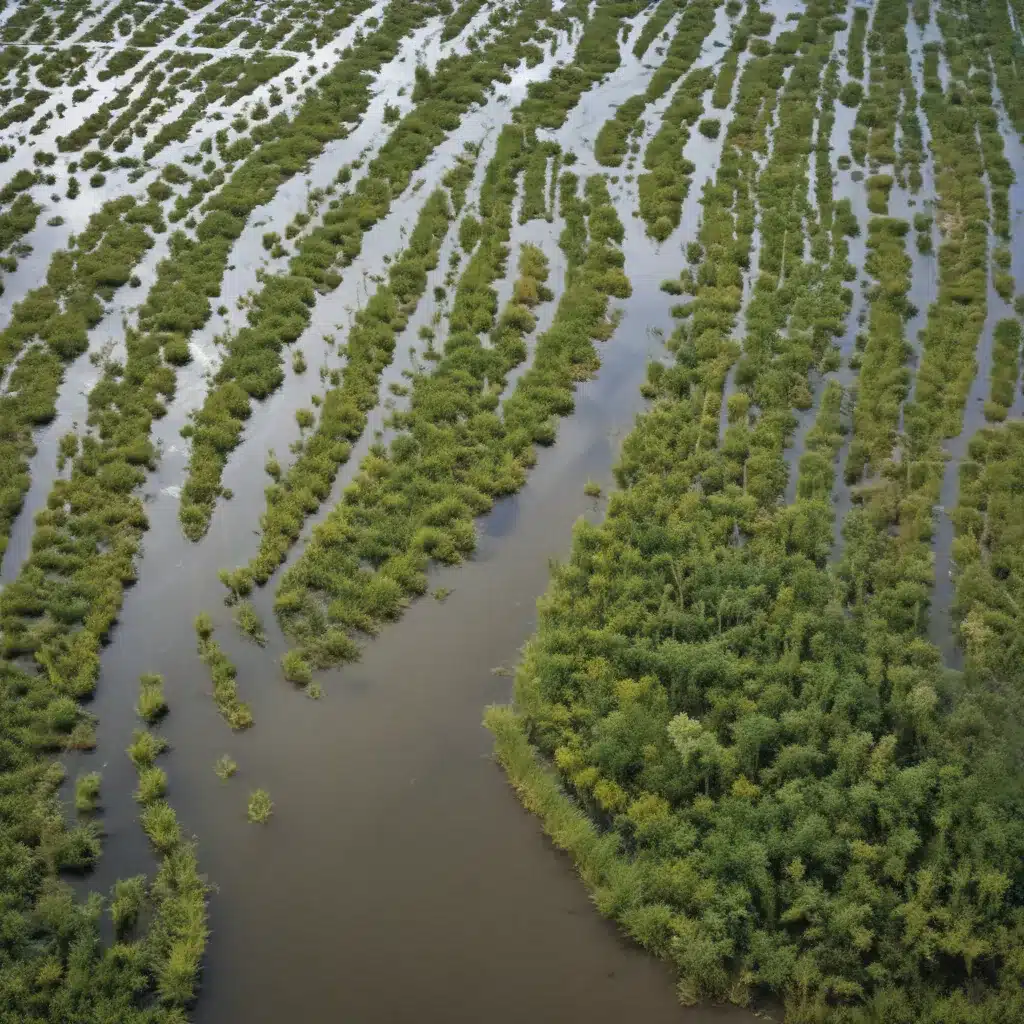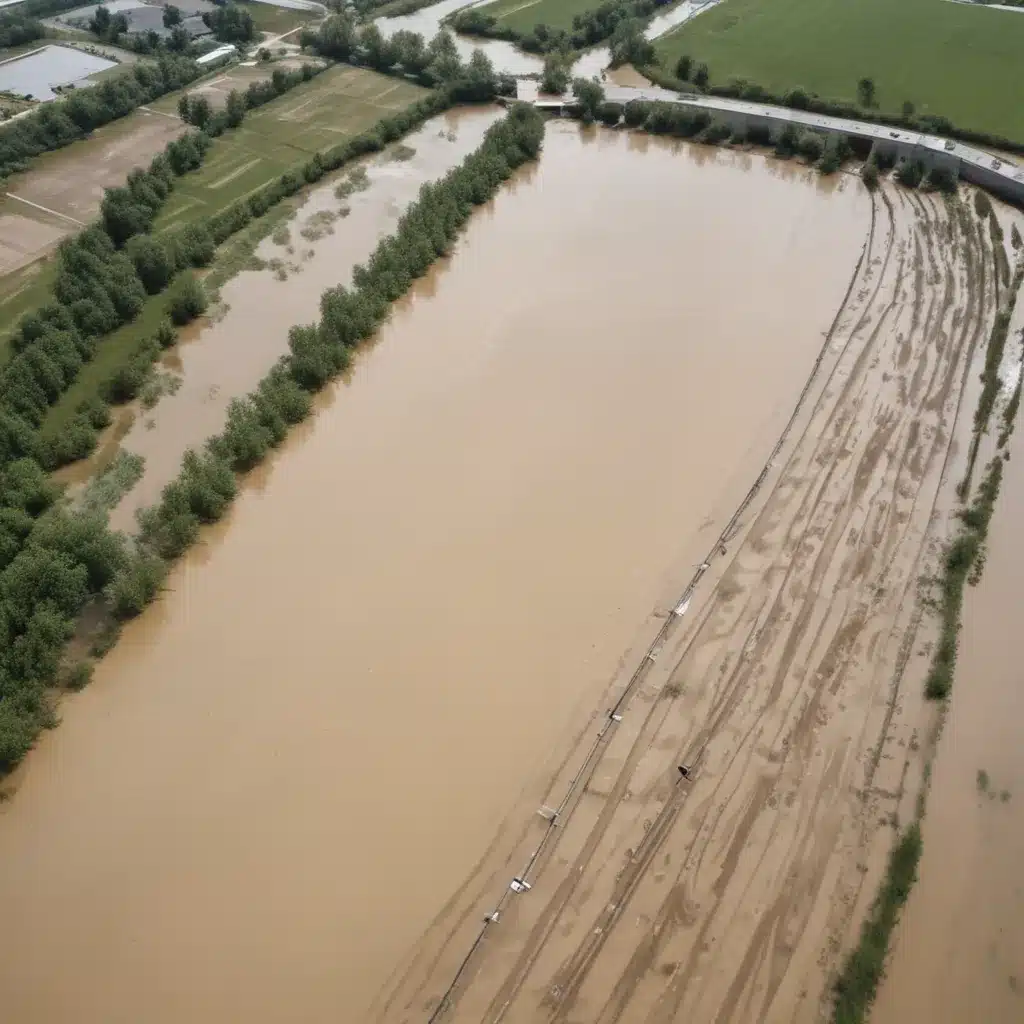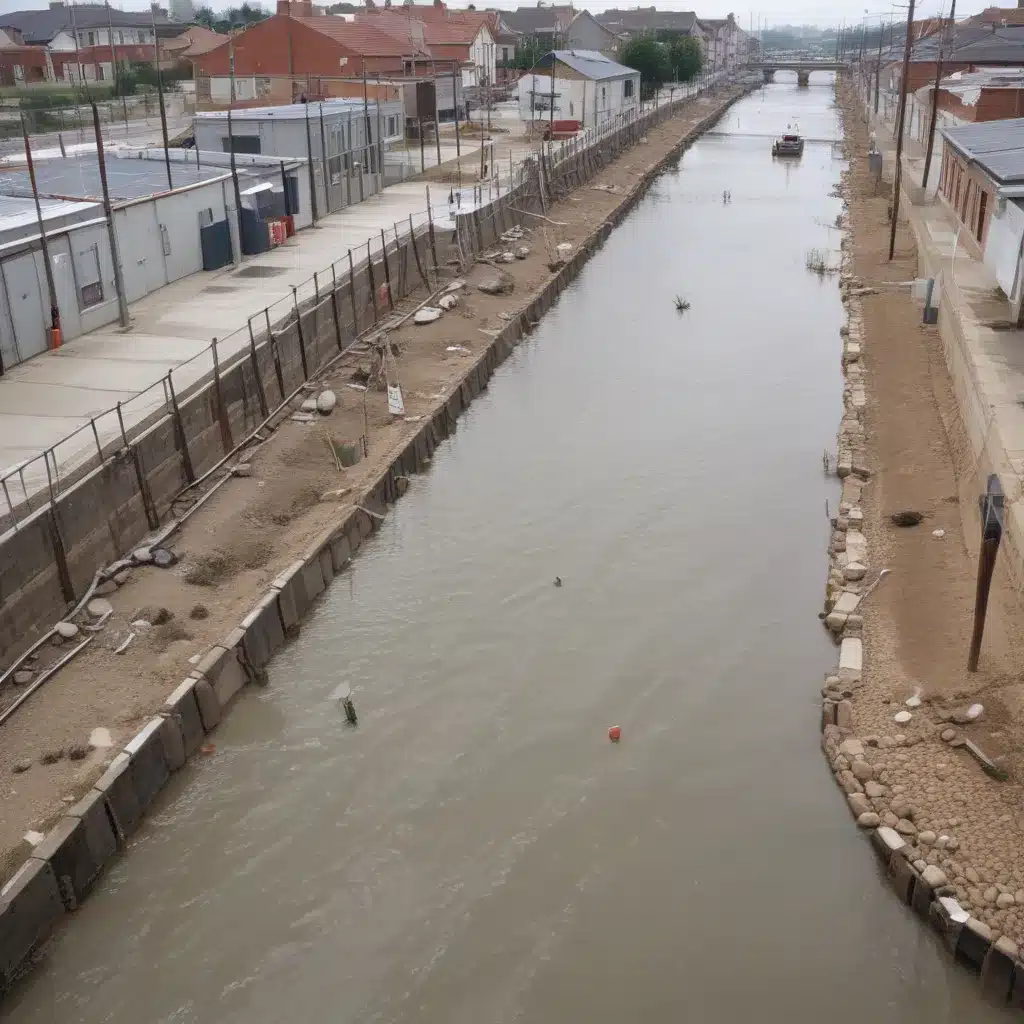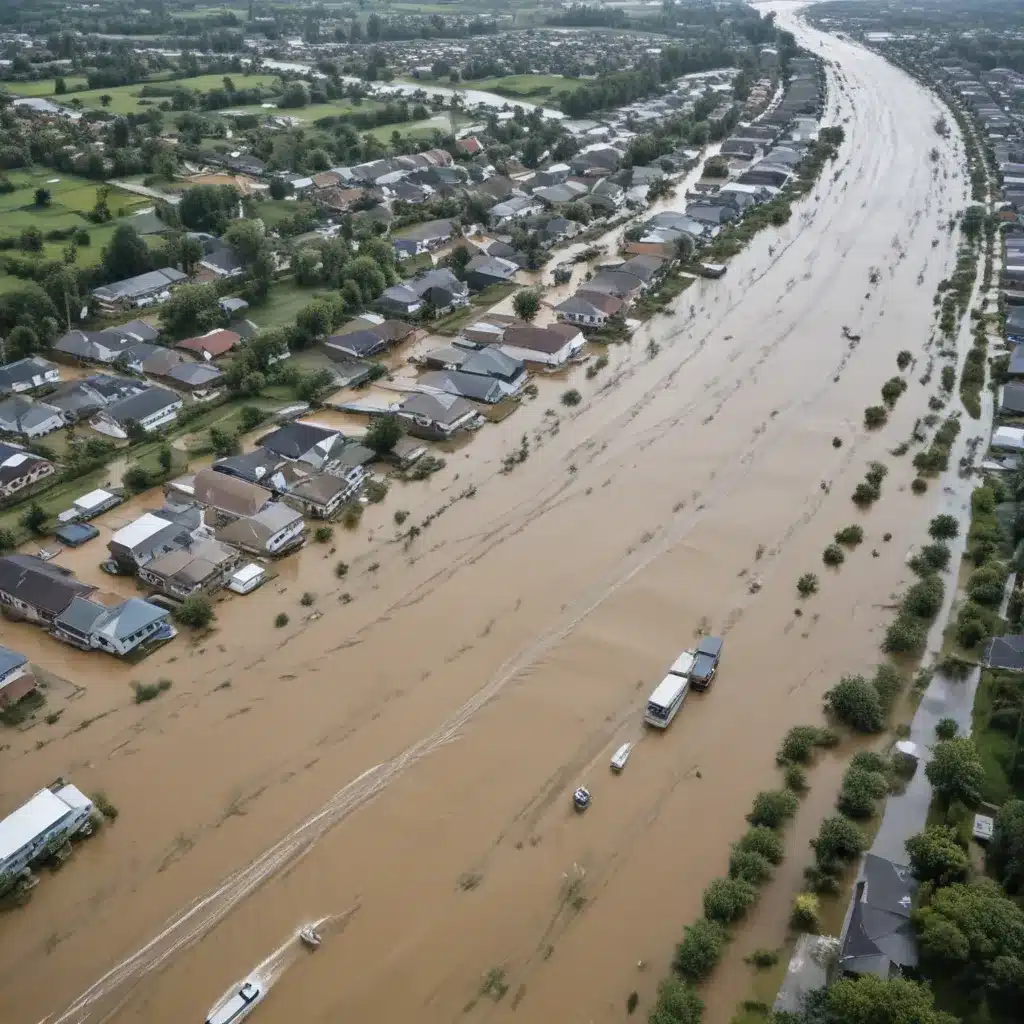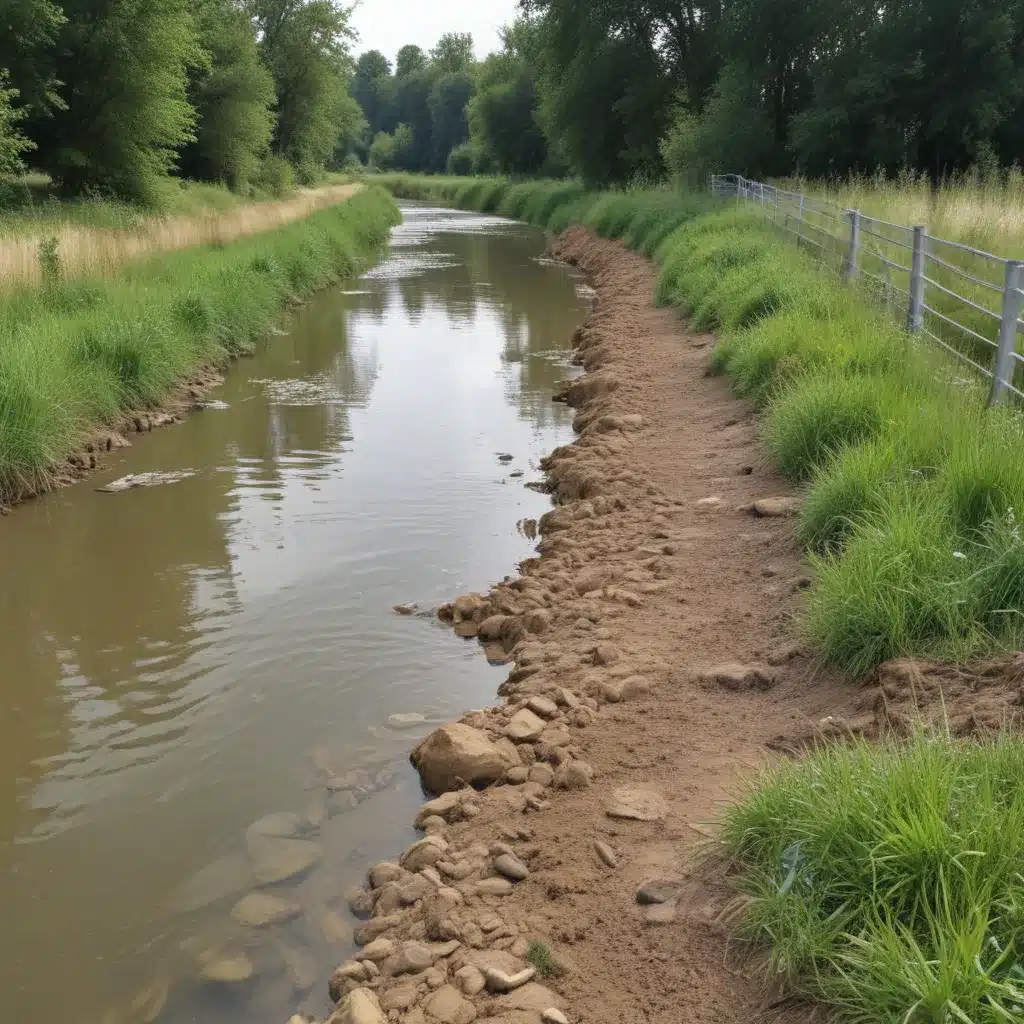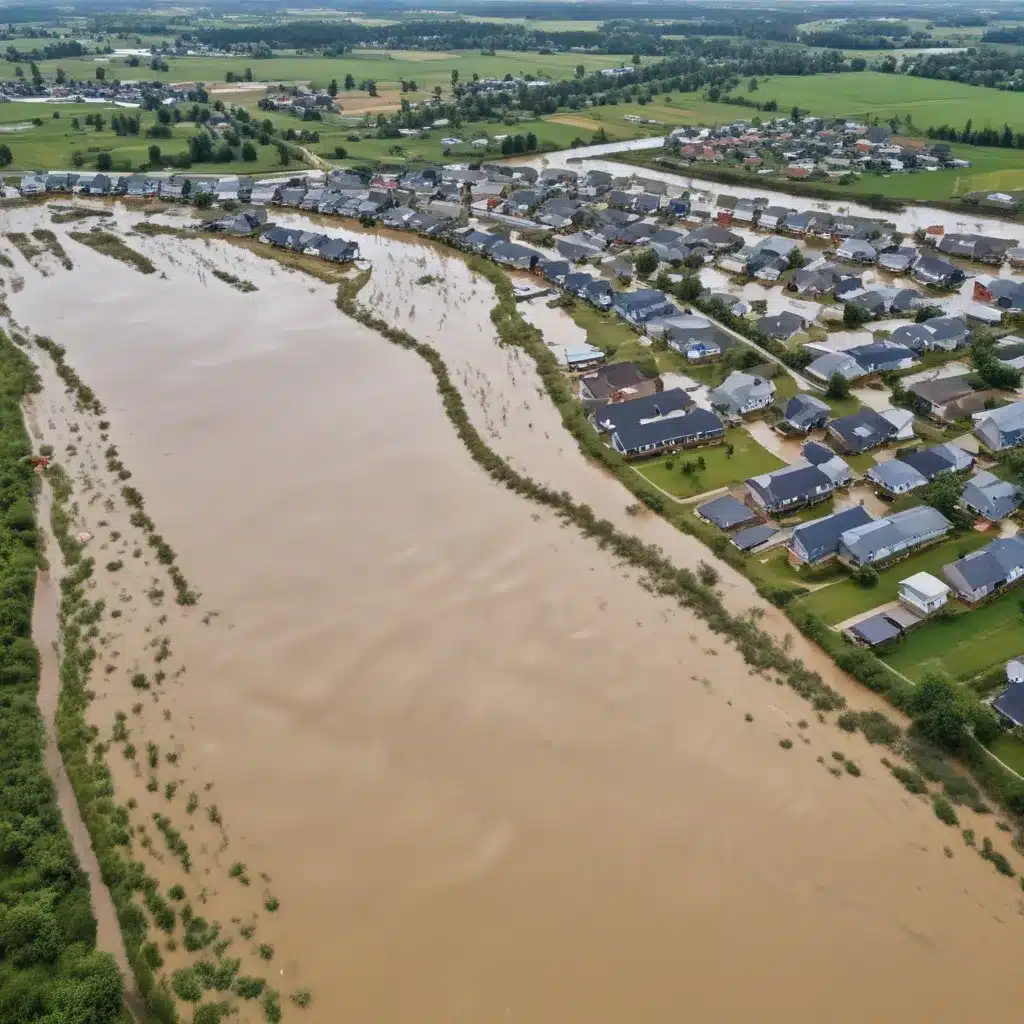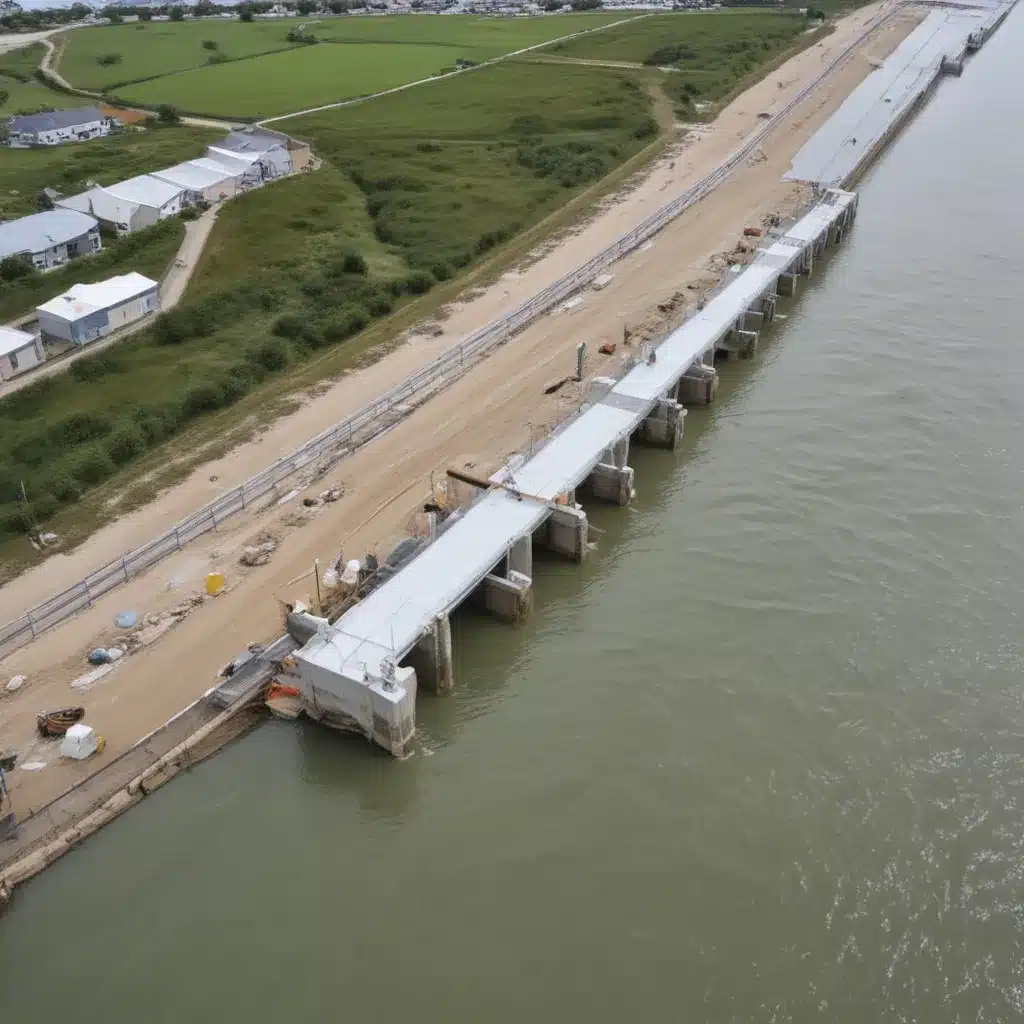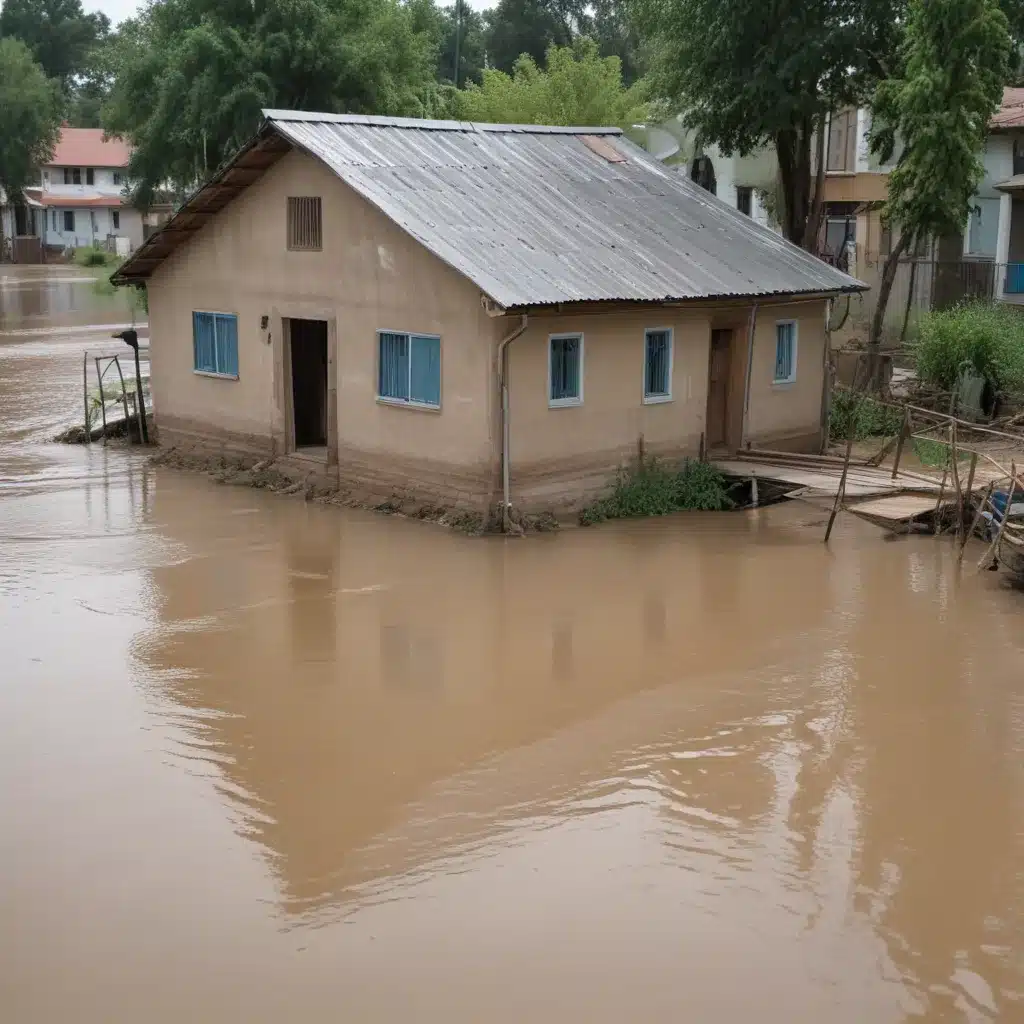Like a sturdy lifeboat in the stormy sea, emergency kits and evacuation plans provide a lifeline of preparedness during flood situations. When faced with the unpredictable and destructive force of floods, it is crucial to equip ourselves with the necessary tools and knowledge to navigate through the chaos. In this discussion, we will explore the importance of emergency kits and the vital items they should contain, as well as the essential elements of a well-thought-out evacuation plan. So, grab a seat and get ready to discover how a little bit of preparation can make a world of difference in the face of a flood emergency.
Key Takeaways
- Emergency kits are essential for preparedness and safety during floods.
- Traditional items like water, food, flashlights, and first aid supplies are still crucial.
- Portable water filtration systems and purification kits provide access to safe drinking water.
- Communication and lighting tools, as well as personal hygiene and sanitation items, are important for overall well-being during emergencies.
Importance of Emergency Kits
Emergency kits are crucial for ensuring preparedness and safety during flood situations. When it comes to emergency response and disaster preparedness, having a well-equipped emergency kit can make all the difference. In today’s world, where innovation is key, it is important to think beyond the traditional emergency kit and explore new and innovative solutions.
Gone are the days when emergency kits were simply filled with bottled water, non-perishable food, flashlights, and first aid supplies. While these items are still essential, there are now new and innovative products available that can greatly enhance your preparedness during a flood situation.
One such innovation is the inclusion of portable water filtration systems in emergency kits. These compact devices allow you to purify water from any source, ensuring that you have access to safe drinking water even when regular sources are contaminated. This is especially important during flood situations when clean water may become scarce.
Another innovative addition to emergency kits is the inclusion of solar-powered chargers for electronic devices. In today’s digital age, staying connected can be crucial during a disaster. These solar-powered chargers allow you to keep your phones, tablets, and other devices powered up, ensuring that you can access important information and stay in touch with loved ones during a flood situation.
Furthermore, advanced emergency kits now include multi-purpose tools that can serve various functions. From tools for rescue operations to equipment for building temporary shelters, these versatile tools can be a lifesaver during a flood situation.
Essential Items for an Emergency Kit
With a focus on enhancing preparedness during flood situations, it is essential to consider the specific items that should be included in an emergency kit. Building an emergency kit with the right contents is crucial for effective emergency preparedness. In today’s rapidly evolving world, innovation plays a key role in ensuring our safety during unforeseen events.
First and foremost, a reliable communication device is imperative. In times of crisis, staying connected with loved ones and emergency services is vital. Consider including a portable battery charger and a hand-crank radio in your emergency kit. These innovative tools will keep you informed and connected, even if power is lost.
Next, prioritize basic necessities such as food and water. Opt for lightweight, non-perishable items that can sustain you and your family for at least three days. Innovative options like freeze-dried meals and water purification tablets are ideal for compact emergency kits.
Additionally, don’t forget about personal hygiene and medical supplies. Pack essentials like hand sanitizer, wet wipes, and a first aid kit with innovative features such as compact design and multi-purpose tools. Include any necessary medications and consider adding a few face masks for added protection.
Lastly, remember to include important documents and cash. Keep copies of identification, insurance policies, and emergency contact information in a waterproof pouch. In the age of digital innovation, it is also wise to store digital copies of these documents on a secure cloud storage platform.
Water Supply and Purification
Ensuring access to clean drinking water is crucial during flood situations. When emergency shelters are set up, it is imperative to have a reliable water supply and effective water filtration systems in place. Innovative solutions can play a vital role in addressing this challenge.
One innovative approach to water filtration is the use of portable water filtration devices. These compact and lightweight devices are designed to remove impurities and contaminants from water, making it safe for consumption. They are easy to use and can provide clean drinking water in emergencies. Additionally, some devices are equipped with advanced filtration technologies that can even remove bacteria and viruses from water, ensuring its safety.
Another innovative solution is the development of emergency water purification kits. These kits are designed to be easily transportable and can provide a reliable source of clean drinking water during flood situations. They typically include purification tablets or drops that can kill harmful bacteria and viruses, as well as improve the taste of the water. These kits are an essential addition to any emergency kit as they can provide a quick and effective solution for water purification.
Non-Perishable Food and Cooking Supplies
During flood situations, it is important to have a sufficient supply of non-perishable food and cooking supplies readily available. These items are essential for ensuring that you and your family have access to nutritious meals even when access to fresh food is limited. To help you plan your emergency kit, we have compiled a list of innovative non-perishable food options and cooking supplies that can be easily stored and prepared during flood situations.
The following table provides a visual representation of these ideas:
| Non-Perishable Food | Cooking Supplies |
|---|---|
| Canned fruits and vegetables | Portable camping stove |
| Energy bars and granola | Disposable plates, cups, and cutlery |
| Dried fruits and nuts | Multi-purpose cooking pot |
| Canned meats and fish | Lightweight cooking utensils |
When selecting non-perishable food items, opt for those that are high in nutrients and can be consumed without cooking or with minimal preparation. Canned fruits and vegetables are a great source of vitamins and can be eaten straight from the can. Energy bars and granola provide a quick boost of energy and are perfect for on-the-go situations. Dried fruits and nuts are not only nutritious but also lightweight and easy to store.
For cooking supplies, a portable camping stove is a versatile option that allows you to cook meals even when electricity or gas is unavailable. Disposable plates, cups, and cutlery eliminate the need for washing dishes, saving water and time. A multi-purpose cooking pot is a space-saving solution that can be used for boiling water, cooking soups, and heating canned foods. Lightweight cooking utensils are essential for food preparation and can be easily packed in your emergency kit.
First Aid and Medications
To adequately prepare for flood situations, it is crucial to have a well-stocked emergency kit that includes essential first aid supplies and necessary medications. In times of disaster, it is important to be equipped with the knowledge and tools to administer basic first aid techniques. This not only ensures the safety of yourself and your loved ones but also allows you to assist others in need.
First aid techniques can range from simple wound cleaning and dressing to more complex procedures such as CPR and the Heimlich maneuver. It is essential to have items like bandages, adhesive tape, antiseptic solution, and disposable gloves in your emergency kit. These supplies will enable you to treat minor injuries and prevent infections, which can be a common occurrence during flood situations.
In addition to first aid supplies, proper medication storage is crucial during flood situations. Medications play a vital role in managing chronic conditions and ensuring the well-being of individuals with specific health needs. When preparing your emergency kit, make sure to include a sufficient supply of prescription medications, along with any necessary over-the-counter medications such as pain relievers, antihistamines, and anti-diarrheal medications. These medications should be stored in a waterproof container to protect them from potential water damage.
Remember to regularly check the expiration dates of your medications and replace them as needed. It is also important to keep a written list of all the medications and dosages, as well as any known allergies or medical conditions, in case you need to seek medical assistance during an evacuation.
Communication and Lighting Tools
We rely on communication and lighting tools to stay connected and navigate during flood situations. In emergency shelters, it’s crucial to have reliable communication devices to keep in touch with loved ones and emergency services. Additionally, proper lighting is essential for safety and comfort in dark or dimly lit areas.
To meet the needs of an audience that desires innovation, we have compiled a table showcasing some cutting-edge communication and lighting tools that can be included in your emergency kit:
| Tool | Description |
|---|---|
| Solar-Powered Radio | This radio uses solar energy to power its built-in lights and can also be charged using a hand crank. It provides access to important weather updates and emergency broadcasts. |
| Portable Wi-Fi Hotspot | This device allows you to create a Wi-Fi network, enabling you to connect your devices to the internet even in areas with limited or no cellular network coverage. |
| LED Headlamp | A lightweight and hands-free lighting solution, the LED headlamp provides bright illumination for navigating in the dark. It is adjustable and has different light modes to suit your needs. |
| Emergency Whistle | This compact and loud whistle can be used to signal for help or alert others of your presence. It is an essential tool for communication in emergencies. |
| Solar-Powered Lantern | This lantern harnesses solar energy to provide long-lasting and bright illumination. It is lightweight, portable, and can be easily recharged using sunlight. |
| Two-Way Radios | These radios allow for clear and instant communication between individuals, making them ideal for staying connected with your family or group members during a flood situation. |
Personal Hygiene and Sanitation Items
Our hygiene and sanitation are of utmost importance in flood situations. When faced with the challenges of limited resources and potential water contamination, it is crucial to be prepared with the right personal care products and toilet paper alternatives. Here are some innovative solutions to ensure cleanliness and sanitation during emergencies:
- Toilet Paper Alternatives:
- Biodegradable Wipes: Opt for eco-friendly, biodegradable wipes that can be used as a substitute for toilet paper. These wipes are convenient, easy to use, and can be disposed of safely.
- Reusable Cloth Wipes: Consider using reusable cloth wipes made of soft and absorbent materials. These can be washed and reused, reducing waste and ensuring a sustainable approach to personal hygiene.
- Personal Care Products:
- Dry Shampoo: In situations where access to water is limited, dry shampoo can be a game-changer. It helps keep your hair fresh and clean without the need for traditional washing.
- Waterless Hand Sanitizer: Invest in a waterless hand sanitizer that contains at least 60% alcohol. This will help kill germs and bacteria when handwashing facilities are not readily available.
- Portable Bidet:
For a more hygienic alternative to toilet paper, consider a portable bidet. These devices use a gentle stream of water to clean, promoting better personal hygiene while reducing waste.
Important Documents and Cash
It is crucial to ensure the safety and accessibility of important documents and cash during flood situations. When faced with an emergency, having quick access to these items is essential. To ensure their protection, it is vital to store them in a safe and secure location. Here is a table that provides an overview of safe storage options for important documents and cash:
| Storage Option | Description | Advantages |
|---|---|---|
| Waterproof safe | A secure box that is designed to protect against water damage. | – Protects against water damage |
| – Keeps documents and cash secure | ||
| Ziploc bags | Sealable plastic bags that can keep items dry and organized. | – Affordable and readily available |
| – Easy to grab and go | ||
| Safety deposit box | A secure storage facility provided by banks or other financial institutions. | – Offers a high level of security |
| – Protects documents and cash from theft and damage |
When it comes to emergency cash options, it is advisable to have a mix of cash and alternative payment methods. While cash is essential for immediate needs, it is also crucial to consider digital payment options such as mobile wallets or prepaid cards. These options provide convenience and flexibility, allowing you to access funds even if traditional banking services are disrupted. Additionally, having a small amount of foreign currency can be useful in case of evacuation to a different country.
Clothing and Bedding Supplies
When preparing for flood situations, one important aspect to consider is ensuring that you have adequate clothing and bedding supplies readily available. In times of emergency, having the right clothing essentials and bedding storage can make a big difference in your comfort and well-being. Here are some innovative ideas to help you prepare:
- Clothing Essentials:
- Pack a set of weatherproof clothing, including waterproof jackets, pants, and boots. These will keep you dry and protected from the elements.
- Don’t forget to include extra pairs of socks, underwear, and thermal layers. These will help you stay warm even in challenging conditions.
- Bedding Storage:
- Opt for space-saving bedding solutions like vacuum-sealed bags or compression sacks. These innovative storage options will help you maximize the available space in your emergency kit.
- Consider investing in lightweight and compact sleeping bags or blankets. These can provide you with a sense of comfort and security during challenging times.
Tools and Safety Equipment
In flood situations, having the right tools and safety equipment readily available is crucial for ensuring your safety and the safety of others. When it comes to tool maintenance, it is important to regularly check and maintain your equipment to ensure it is in proper working condition. This includes cleaning, lubricating, and sharpening tools as needed. By keeping your tools in good condition, you can rely on them when you need them the most.
In terms of safety gear selection, it is essential to choose high-quality equipment that is designed to withstand extreme conditions. Look for safety gear that is durable, waterproof, and resistant to chemicals and debris. Additionally, consider equipment that offers advanced features such as built-in GPS or communication capabilities to enhance your safety and aid in rescue efforts.
To give you a visual representation, here is a table showcasing some essential tools and safety equipment to include in your emergency kit:
| Tools | Safety Equipment |
|---|---|
| Flashlight | Life Jackets |
| Multi-tool | Helmet |
| Duct tape | Gloves |
| Rope | Safety goggles |
| Whistle | Respirator mask |
| Hammer | Waterproof boots |
Pet Supplies and Medications
Let’s talk about the essential pet supplies and medications to include in your emergency kit. First and foremost, make sure you have enough pet food and water to last for at least three days. Additionally, don’t forget to pack any necessary medications and prescriptions your pet may need.
Pet Food and Water
As we prepare for potential flood situations, it is crucial to ensure that we have an ample supply of pet food, water, and necessary medications. When it comes to pet food and water, we need to think ahead and be prepared. Here’s what you should consider:
- Pet Shelter
- Set up a designated area in your home or find a pet shelter where your furry friend can stay during the flood.
- Make sure the shelter has enough food, water, and bedding to keep your pet comfortable.
- Pet Emergency Kits
- Create an emergency kit specifically for your pet, including a week’s supply of food and water.
- Don’t forget to include any medications your pet may need, along with a first aid kit for any emergencies.
Medications and Prescriptions
Our pet emergency kits should include an ample supply of medications and prescriptions to ensure the health and well-being of our furry friends during flood situations. Proper medication storage is crucial during emergencies, as it ensures that our pets receive the necessary treatment without any disruptions. It is important to check the expiration dates regularly and replace any expired medications promptly. In addition, we should have a plan in place for emergency prescription refills. Keeping a record of our pets’ prescriptions and contacting our veterinarians ahead of time can help expedite the refill process. To emphasize the significance of medication storage and emergency prescription refills, here is a table showcasing the essentials:
| Medication Storage | Emergency Prescription Refill |
|---|---|
| Check expiration dates regularly | Keep a record of prescriptions |
| Replace expired medications promptly | Contact veterinarian for refill |
| Store medications in a cool, dry place | Plan to avoid delays |
Evacuation Planning and Preparedness
To ensure our safety during flood situations, it is crucial to have a well-designed evacuation plan and preparedness kit. This not only helps us stay organized but also ensures that we can respond quickly and efficiently in times of crisis. Here are some key points to consider when developing your evacuation plan and preparing for emergencies:
- Evacuation Drills: Conducting regular evacuation drills is essential to ensure that everyone in your household or organization knows what to do when a flood occurs. These drills should simulate real-life scenarios and include identifying evacuation routes, practicing emergency communication methods, and familiarizing yourself with the location of emergency shelters.
- Emergency Shelters: In the event of a flood, it is vital to know nearby emergency shelters. These shelters provide temporary accommodations and essential resources for those who need to evacuate their homes. Stay informed about the locations of these shelters and include them in your evacuation plan.
Identifying Safe Evacuation Routes
Ensuring our safety during flood situations requires a clear understanding of safe evacuation routes. When faced with the urgency of escaping rising floodwaters, it is vital to have a plan in place that includes knowing the best routes to reach higher ground or safe shelter options. In this article, we will explore innovative ways to identify safe evacuation routes and emergency transportation options.
To help you visualize the importance of this topic, let’s take a look at a table that outlines different factors to consider when identifying safe evacuation routes:
| Factors to Consider | Examples of Considerations |
|---|---|
| Road Conditions | Traffic congestion, road closures, alternative routes |
| Elevation | Higher ground areas, hills, elevated buildings |
| Proximity to Water | Distance from rivers, lakes, and flood-prone areas |
| Accessibility | Availability of emergency transportation options, wheelchair accessibility |
By examining these factors, we can proactively plan our evacuation routes and ensure a smoother and safer journey. It is crucial to stay updated on road conditions and potential closures during flood situations. Utilizing innovative technologies like real-time traffic apps can provide valuable information on traffic congestion and alternative routes.
In addition to road conditions, considering elevation is essential. Identifying higher ground areas, hills, or elevated buildings can serve as safe shelter options during flood emergencies. These elevated locations can provide temporary refuge until emergency services arrive.
Lastly, proximity to water is a crucial factor in determining safe evacuation routes. By avoiding areas near rivers, lakes, and flood-prone zones, we can minimize the risk of encountering rising floodwaters.
Moreover, it is essential to have access to emergency transportation options during flood situations. This can include arranging for a designated driver, utilizing public transportation, or keeping contact information for ride-sharing services readily available.
Establishing Meeting Points and Communication Plans
Now let’s talk about the important aspects of establishing meeting points and communication plans during flood situations. Meeting locations should be predetermined and easily accessible for all individuals involved. It is crucial to establish reliable contact methods, such as phone numbers or walkie-talkies, to ensure effective communication. Additionally, emergency communication routes should be identified and communicated to all parties involved to ensure a smooth flow of information during critical times.
Meeting Locations
We will establish designated meeting points and create communication plans for effective coordination during flood situations. To ensure seamless communication and coordination, we will implement the following strategies:
- Emergency Shelters
- Identify and designate nearby emergency shelters as primary meeting points for individuals and families.
- Ensure that emergency shelters have adequate communication infrastructure in place, such as Wi-Fi or satellite phones, to enable effective communication during floods.
- Transportation Options
- Establish secondary meeting points at easily accessible transportation hubs, such as bus or train stations, to facilitate swift evacuation.
- Coordinate with local authorities to ensure that transportation options are available and accessible for individuals to reach the designated meeting points.
Contact Methods
To establish meeting points and communication plans during flood situations, we will implement various contact methods. In addition to traditional methods such as phone calls and text messages, we will explore alternative contact options and emergency communication devices that can enhance our ability to stay connected during times of crisis. One such option is the use of satellite phones, which provide reliable communication even when traditional networks are down. These devices are portable, easy to use, and can be a lifeline in emergencies. Another alternative contact option we will consider is the utilization of social media platforms and messaging apps, which can help us quickly disseminate important information to a large number of people. By embracing these innovative contact methods, we can ensure effective communication and coordination in flood situations, ultimately saving lives and minimizing damage.
Emergency Communication Routes
Exploring various communication methods is crucial for establishing effective emergency communication routes and meeting points during flood situations. To ensure smooth coordination and quick response, innovative approaches can be adopted. Here are two key strategies to consider:
- Establishing Emergency Shelters: Identifying and designating specific locations as emergency shelters can serve as meeting points for individuals and families during flooding incidents. These shelters can be equipped with communication devices, such as satellite phones or two-way radios, to facilitate communication with authorities and loved ones.
- Coordinating Rescue Operations: Developing a comprehensive communication plan for rescue operations is essential. This may involve utilizing advanced technologies like drones or GPS tracking systems to locate and communicate with individuals in distress. Additionally, establishing a centralized communication hub can help coordinate efforts between emergency responders and support teams.
Emergency Contacts and Information Resources
In times of flooding, it is crucial to have readily accessible emergency contacts and information resources. When faced with a flood situation, knowing where to turn for help is essential. This is why it is important to have a comprehensive list of emergency contacts and information resources at your fingertips.
One of the first things to include in your emergency contacts list is the phone numbers for local emergency shelters. These shelters are designed to provide temporary housing and support for individuals and families who are displaced during a flood. By having these numbers readily available, you can quickly find a safe place to stay until the floodwaters recede.
Another important contact to have on hand is the number for emergency transportation services. If you need to evacuate your home due to flooding, having access to transportation can be a lifesaver. Whether it’s a local taxi service or a designated emergency transportation provider, having this information readily available can help you get to safety quickly and efficiently.
In addition to emergency contacts, it is also important to have access to information resources during a flood situation. This can include local news stations, weather websites, and social media accounts that provide up-to-date information on flood conditions and evacuation orders. By staying informed, you can make better decisions about your safety and the safety of your loved ones.

